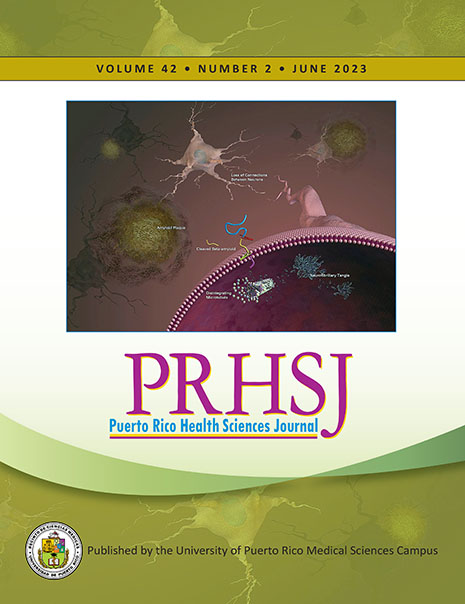Abstract
Objective: The aim of this study was to determine the prevalence of severely increased albuminuria and the percentage of patients with the indication for canagliflozin in the type 2 diabetes population with chronic kidney disease (CKD) and low socioeconomic status in the San Juan City Hospital. Methods: This cross-sectional study examined the electronic records of 129 Hispanic type 2 diabetes patients. CKD in this population was defined according to the most recent nephrology and endocrinology guidelines. Albuminuria was diagnosed with two positive urine albumin/creatinine ratio results within 3-6 months. Data was obtained from July 2017 to January 2020 and analyzed utilizing descriptive statistics and correlations. Results: The prevalence of moderately and severely increased albuminuria in patients with type 2 diabetes and CKD were 51.2% and 18.6% respectively. The number of patients with type 2 diabetes who filled the FDA indication for canagliflozin were 16.3%. The prevalence of hypertension, coronary artery disease (CAD) and heart failure (HF) was 61.2%, 15.5% and 10.1% respectively. Between albuminuria severity and decreased renal function, a tendency was observed although not statistically significant (r = -0.14, 95% CI: -0.31, 0.03; P = 0.109). While evaluating association between albuminuria groups and CAD, there was a noticeable tendency close to reaching statistical significance (P = 0.060). Conclusion: There is a scarcity of studies regarding the prevalence of severely increased albuminuria in type 2 diabetics with CKD and this study contributes to the literature. On analysis of associations, statistical significance not reached likely due to small sample size.
Authors who publish with this journal agree to the following terms:
a. Authors retain copyright and grant the journal right of first publication with the work simultaneously licensed under a Creative Commons Attribution License that allows others to share the work with an acknowledgement of the work's authorship and initial publication in this journal.
b. Authors are able to enter into separate, additional contractual arrangements for the non-exclusive distribution of the journal's published version of the work (e.g., post it to an institutional repository or publish it in a book), with an acknowledgement of its initial publication in this journal.
c. Authors are permitted and encouraged to post their work online (e.g., in institutional repositories or on their website) prior to and during the submission process, as it can lead to productive exchanges, as well as earlier and greater citation of published work (See The Effect of Open Access).
